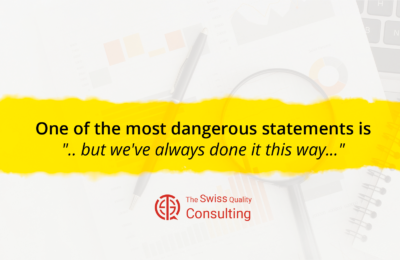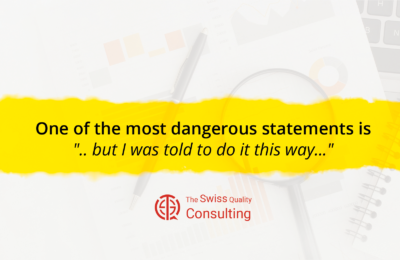When businesses seem as though they will not accomplish so much or perform as expected, you have to carry out some performance measurement. With these measures, you will be able to determine the effectiveness and efficiency of your management. Meanwhile, several reasons could make you fall short. One of these could be because you have not defined your direction yet or created a roadmap of how to get to your destination.
Vision and Mission
From an organizational perspective, it might be that you are not focusing on the things you want to achieve and how you will achieve them. That is your vision and mission statements. These two go hand-in-hand in developing organizational strategies and they are “must-haves” for performance measurement and proper business evaluation.
The vision statement gives an eventual destination for your business goals while the mission statement is a guiding path to the defined destination.
As important as the vision and mission statements are, you also need to define other accompanying elements such as strategies, goals, objectives, and action plans to fully and appropriately establish them.
Creating the vision and mission statements can be a lot of busywork, but they are critical to the development and success of your setup. They enhance your ability to focus on the very important aspects of your business. Hence, saving some money and time. Not only that, it increases your chances of success.
All these sum up to the efforts of strategy consulting, which is an essential aspect of business performance and management. We, at The Swiss Quality, provide first-class strategy consulting tailored to what you offer.
Know what you are doing- that is the mission. The vision says- where you are trying to go. The values talk about how you will go about it. These things are the glue that binds an organization together.
In establishing your strategy, you must be careful not to confuse mission and vision. The mission represents your core purpose, your reason for existence, and is best represented in the present tense. Your vision talks about your desired state, where you intend to go. The mission statement spots some light on your type of business and the prospective customer that your services suit. To ensure that you have a solid foundation for a successful organization, be intentional about having a written, clear and concise mission statement. And, keep it short. According to Peter Drucker, “your mission should fit on a t-shirt.” Comparing strategy, vision and mission
Guidelines
The following guidelines help write or test your mission statement. To write an efficient and productive statement, get in touch with The Swiss Quality consultants today and we would gladly meet the request:
Focus on meeting and satisfying the needs of your customer
Whatever approach you take, your mission statement should focus on satisfying or exceeding the needs of your customers. It must answer the questions of who your customers are, what values your organization have in place to satisfy them, and how to meet their needs.
Let it be based on your core competencies
Your mission should depend on your superior strength, the capability of your units and what you perform best in, compared to your competitors. This is a must-know as you strive to keep your goals measurable and to integrate them with the ability of your management.
Keep it real
A terrible thing to do is to write an unrealistic mission statement. Do not make it too narrow, neither too broad. Keep it real.
Clear, concise and understandable
Develop your mission statement and ensure it relays accurate information to people as quickly as possible. With that, you will provide a profound focus on everything your company does.
Motivating and inspiring for stakeholders
Also, keep in mind that your mission statement should motivate your stakeholders. It must be inspiring enough that it acknowledges their significance and is a pointer to how impacting you want it to be to their lives.
Vision Statement
When you picture yourself trying to climb a mountain, you have an insight into what your business tends to achieve. This gives a clear image of what makes up the future of what you have, and where you are going.
It could be like a mental representation of what you will look like in 5-10 years from now. Thus, it must have some detail of longevity and be able to delineate the various activities you want to pursue. Not only that, it highlights the capabilities of your current organization. It is a unifying concept that must inspire, be purpose-driven, motivating, audacious and future-casting.
“Good business leaders create a vision, articulate the vision, passionately own the vision, and relentlessly drive it to completion.“- Jack Welch, Former CEO of General Electric
The functions of mission and vision
Mission and vision statements play three critical roles in organizational development:
- They communicate the purpose of the organization to stakeholders
- They inform and accommodate strategy development
- They develop measurable goals and objectives. Subsequently, you deploy these to measure or gauge the success of the strategies.
Another crucial aspect is that they provide a general compass for the organization and its employees. For instance, vision may talk about growth, performance or innovative capacity of your firm, and how the firm is more likely to have set some measurable objectives regarding these. While performance standards often exceed actual performance, it becomes ideal for managers to outline some metrics that can help predict the future rather than waste time to evaluate the past. Where the firm is going in terms of performance, whether you are on track and are doing well financially are metrics that are incorporated into establishing vision and mission statements.
Relevance of Mission
Mission drives and enhances employees’ engagement
When employees fall in love with their work, the result is higher productivity and massive engagement. They stay longer and show better loyalty.
In fact, according to research, mission-driven workers are over 50% likely to stay on their jobs for the next five years and 30% more likely to grow into high performers. High-performance firms have an intrinsic link to more mission-driven companies. And thus, the mission statement must reflect its commitment to deliver better.
Organizations with high-performing employees are 2.5 times more likely to perform higher with better revenue growth than lower-performing companies. Better put, companies that have a strong sense of work culture and are driven by intense engagement attain success. They overcome competition and are more likely to keep high-performing talent.
Performance-management can be simple. Meanwhile, infusing them into the operational system of a business can be a lot of work. Organizations that incorporate vision and mission focus on performance management, and the way it concerns business consulting.
THE SMART GOAL
There is no way we would talk about vision and mission statements without talking about the common acronym- SMART. You can combine your mission and vision to stress the overall sense of direction where your organization heads.
The creation of goals is essential to work for the sake of achieving the overall aspirations. Also, you must develop narrower aims which must give clear and tangible guidance to your employees as they perform their work.
S- Specific
M- Measurable
A- Achievable
R- Realistic
T- Time-bound
Employees have a high chance of succeeding when you incorporate the SMART goal.
Pitfalls of some vision and mission statements
Did you know that there are some not-good-enough vision statements? You might then want to ask- why or what could be responsible for that.
There are some real-life examples of vision statements that perhaps need some tweaking. Most times, it could be as a result of the fact that there are too many intangibles or buzzwords in the statement. But there is a good approach to writing this.
Note, however, that several great vision statements will not conform to the process. It is not rocket science.
- Carve the definition of your services as an output. It is best to start by being clear about what your organization does. Remain “output focused” rather than focusing on the input
- Highlight the unique twist that your organization brings to the output in (1) above. Talk about how and why they will enjoy your product or services more than your competitors.
- Quantify your statement. Don’t make it too visionary.
- Integrate some real-world aspects for people to conjure a solid mental image that relates to the vision statement
Your ability to inspire employees to put in the level of work ethic and improve the performance of the organization is a critical skill that separates strategic leaders from the poor ones. This is best achieved with the help of a well-constructed vision statement. It is one tool that executives use to inspire their workforce.
WestJet’s vision is “By 2016, WestJet will be one of the five most successful international airlines in the world providing our guests with a friendly, caring experience that will change air travel forever.“ The above is a specific and quantifiable goal.
In a nutshell, a vision statement must be forward-thinking, creative, aspirational, clear and easy to communicate. It must specify what success looks like for your company.
We hereby look forward to having you around to discuss your business. With our wealth of experience and immense capability, we are confident we can help embed the consequential tools of viable vision and mission statements into your products and services.
























